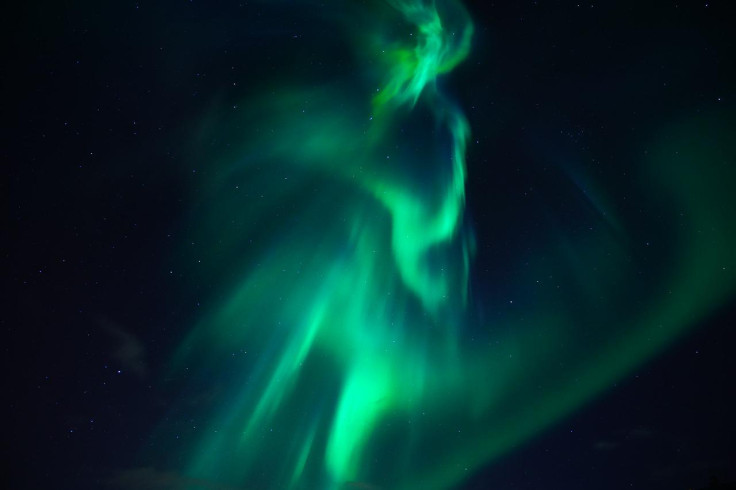A Blue Aurora? Mysterious Streak Of Light Across Sky Baffles Skygazers [Photo]
KEY POINTS
- The blue streak was initially thought to be a blue aurora
- It was most probably the result of a Russian submarine testing
- The blue streak remained stationary in the sky
A mysterious blue streak appeared across the skies over Abisko, a small village in Sweden, on Thursday. Quite different from a regular aurora, experts had a hard time categorizing what it was.
"Our team of photographers has been photographing the night sky for more than a decade and this event was unlike anything we have ever seen," said Chad Blakley, the director of the aurora tour company Lights over Lapland, reported Space.com.
At first, they thought it was a blue aurora. However, there was a stark contrast between the stationary blue streak and the actively moving green aurora around it. As minutes passed, skywatchers realized it was something unique.
Mysterious blue 'aurora' over Lapland surprises skywatchers (photos) https://t.co/1zdpNamrDK pic.twitter.com/xOtjCFRBDh
— SPACE.com (@SPACEdotcom) November 7, 2022
To get to the bottom of this mystery, Blakley consulted with experts in the field.
"My first port of call was Dr. Tony Phillips of spaceweather.com," Blakley said. "Dr. Phillips is an old friend of mine, and he was as puzzled by the blue glow as I was."
After a thorough investigation, Blakley concluded that the blue streak was most probably the result of a Russian submarine testing ICBMs (intercontinental ballistic missiles).
Media outlets like Eurasiantimes and Reuters reported about the successful test-firing of a Bulava ballistic missile from the Russian nuclear-powered submarine Generalissimus Suvorov in the White Sea on the same day the blue streak appeared.
This was not the first instance of a missile test leading to a strange aurora-like glow in the skies. Similar blue ribbons were observed in the skies above the Arctic Circle on Oct. 27, 2017, after the launch of several missiles by Russia as part of a drill, reported spaceweather.com.
Both the aurora borealis and the aurora australis occur when solar particles collide with the Earth's atmosphere and excite nitrogen and oxygen particles. They then produce glowing lights in the sky.
According to NASA, the glowing aurora are "a billion individual collisions" that are lighting up the Earth's magnetic field lines.
Coronal mass ejections (CME) occur more often close to the peak of the solar cycle. And when a CME strikes Earth, it affects space weather and causes the northern and southern lights.
It has been forecasted that the Sun will reach its solar maximum by mid-2025, NASA Earth Observatory noted. This could mean there will be more opportunities to view auroras.
This is an opportunity for citizen scientists to contribute to scientific studies on the phenomenon. One way to do this is through the citizen science program, called Aurorasaurus, which allows people to help track auroras around the world.

© Copyright IBTimes 2025. All rights reserved.





















